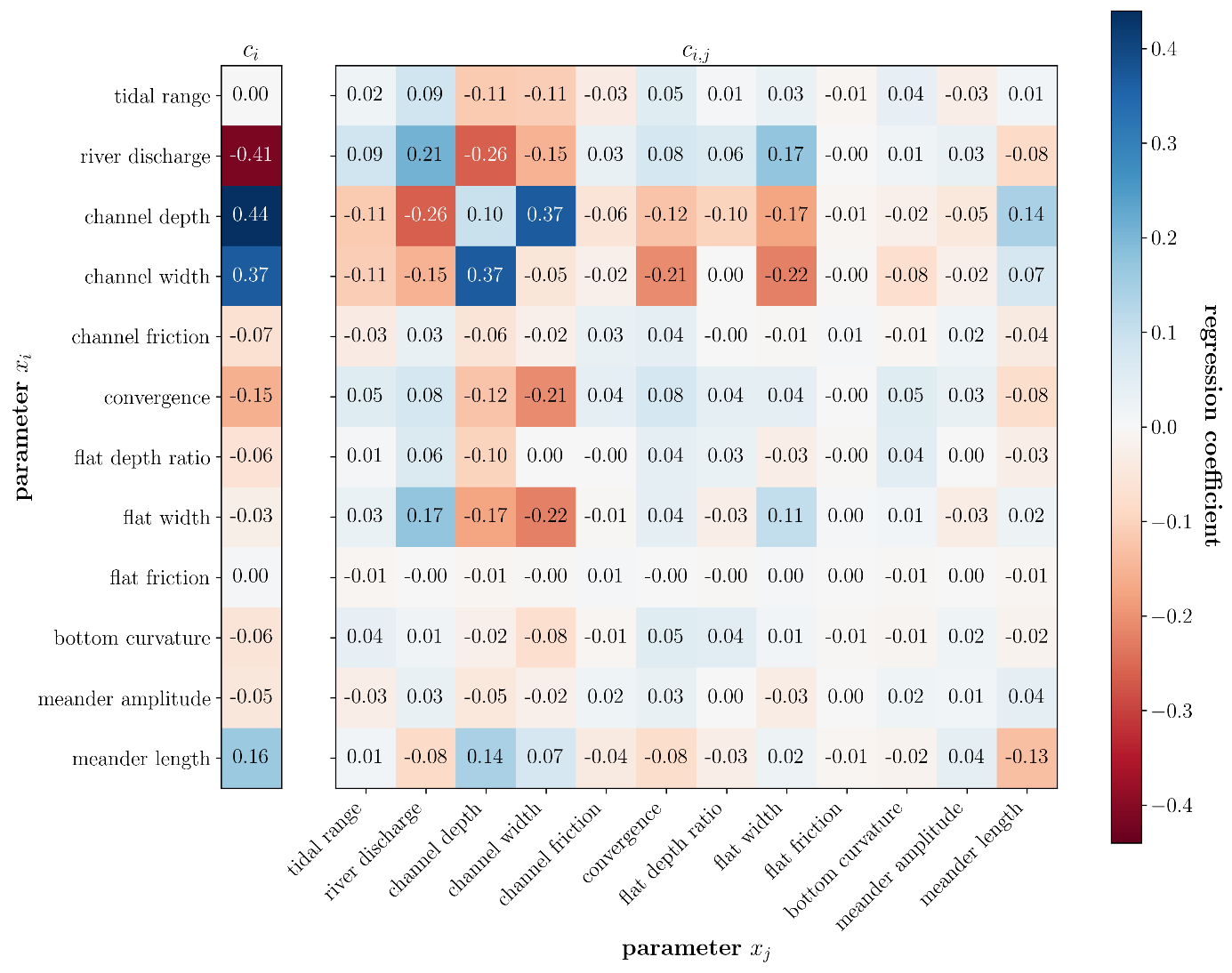G.G. Hendrickx1*, S.G.J Aarninkhof1, P.M.J. Herman1,2
1 Delft University of Technology
2 Deltares
*corresponding author:
Introduction
Deltas are among the most densely populated and heavily utilised regions, where crucial functions, e.g. freshwater availability and water safety, strongly relate to the natural dynamics of the system. Especially when developing nature-based solutions for safeguarding these essential functions, a thorough understanding of estuarine dynamics is required.
Method
In this study, a sensitivity analysis has been carried out using an idealised estuary focusing on the salt intrusion length. The idealised estuary is parametrically designed using key parameters, such as river discharge and water depth. Subsequently, Delft3D Flexible Mesh is used to determine the salt intrusion length for various estuarine layouts. To limit the computational costs of this exploratory study, machine learning techniques have been used to choose samples wisely. At last, the data is fitted to a regression model to gain insights into the sensitivity of the salt intrusion to the various input parameters by analysing the regression coefficients.
Preliminary results
The first results align with knowledge from literature: There is a clear and strong dependence of the salt intrusion length on the river discharge and channel cross-section (see Figure). In addition, the convergence of the estuary and the occurrence of tidal flats have a clear influence on the salt intrusion.

Figure 1: The regression coefficients of the regression model, where a darker shading indicates a higher sensitivity of the salt intrusion to the parameter. The regression model includes linear and quadratic dependencies.
I. Surname1*, F.N. Another-Surname2 , Y. Next-Surname2
1 University Name, Country; 2 Organization Name, Country
* Corresponding author: mail.name@organization.org


